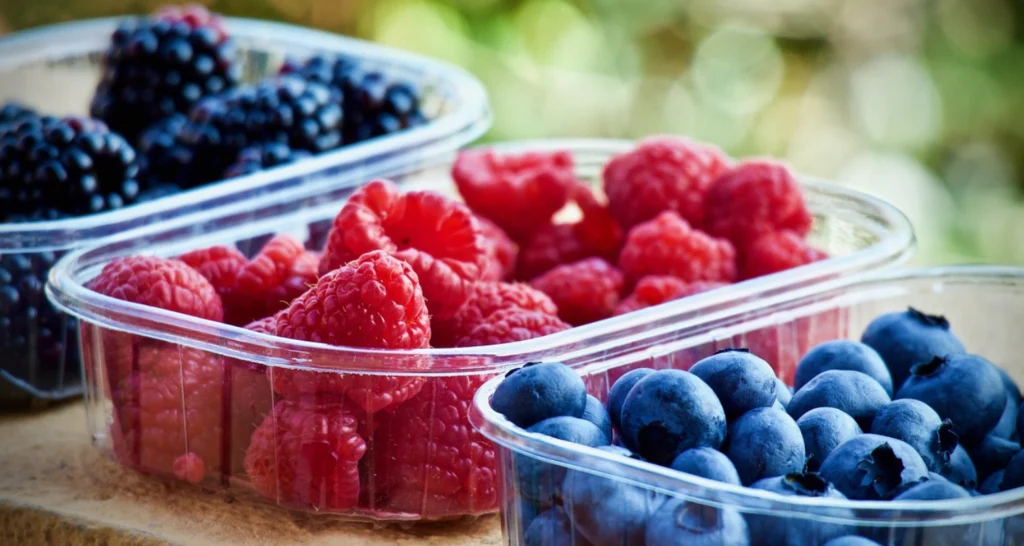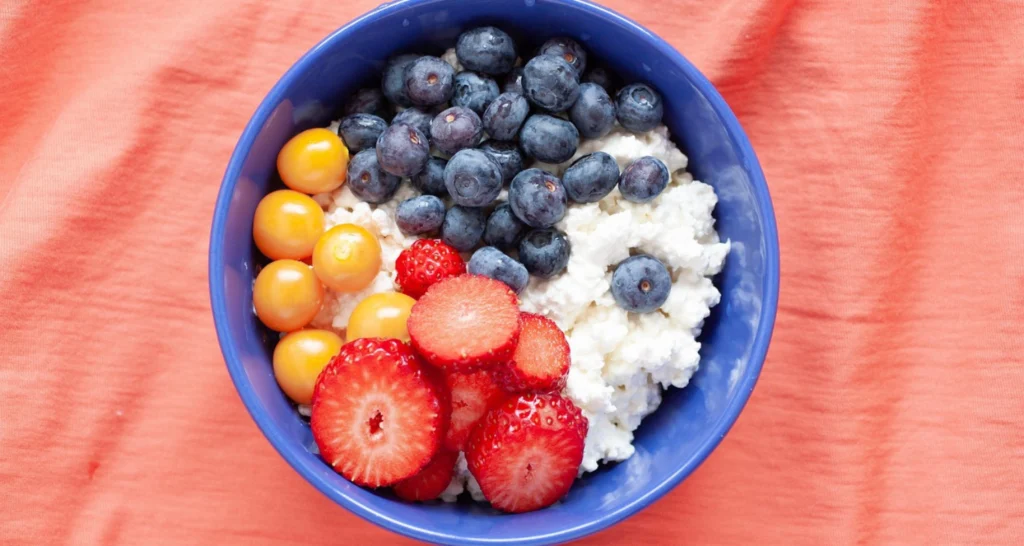Inspiration for Healthy Eating Simple Healthy Eating Tips to Boost Your Daily Nutrition
Adopting a healthy lifestyle can be challenging, but it starts with simple changes to your daily routine, particularly when it comes to your diet. Consistently choosing nutritious foods and beverages is key to boosting your overall nutrition.
Focusing on whole grains, fruits, vegetables, dairy, and protein can significantly enhance your well-being. By making these adjustments, you’re not only improving your physical health but also gaining motivation for a healthier lifestyle.
Embracing these simple tips can lead to a more balanced diet and a healthier you. This article will guide you through practical advice on incorporating these changes into your daily life, providing you with the inspiration for healthy eating habits that last.
Table of Contents
The Building Blocks of Nutritious Eating
Nutritious eating is built on a foundation of understanding the different components of food. A balanced diet provides the body with the necessary nutrients to function correctly, supporting overall health and well-being.
To achieve a balanced diet, it’s essential to understand the roles of macronutrients and micronutrients. Macronutrients, which include carbohydrates, proteins, and fats, are crucial for energy balance. Carbohydrates are the body’s primary energy source, while proteins support muscle growth and repair. Fats, particularly healthy fats, are vital for brain function and the absorption of certain vitamins.
Understanding Macronutrients for Energy Balance
Macronutrients play a significant role in maintaining energy balance. Here are some key points to consider:
- Carbohydrates: Focus on whole grains, fruits, and vegetables for sustained energy.
- Proteins: Include a variety of protein sources like lean meats, fish, and legumes to support muscle health.
- Fats: Choose healthy fats found in nuts, seeds, avocados, and olive oil to support heart health.

Essential Micronutrients for Optimal Health
Micronutrients, including vitamins and minerals, are equally important for optimal health. They support a range of bodily functions, from immune response to nerve function. Key micronutrients to focus on include:
- Calcium and Vitamin D: Crucial for bone health.
- Potassium: Helps regulate blood pressure.
- Dietary Fiber: Supports digestive health and satiety.
Limiting added sugars, saturated fats, and sodium is also vital for maintaining a balanced diet. By understanding and incorporating these nutritional elements, individuals can make informed choices that support their overall health and well-being, aligning with balanced diet ideas and exploring nutritious recipes.
Power-Packed Breakfast Strategies
Incorporating healthy meal ideas into your morning routine can significantly impact your overall nutrition and well-being. A nutritious breakfast not only provides the energy needed for morning activities but also supports your health goals by making better food choices throughout the day.
5-Minute Nutrient-Dense Breakfast Ideas
Starting your day with a nutrient-dense breakfast doesn’t have to be time-consuming. Here are some quick and healthy options:
- Oatmeal with fresh fruits and nuts
- Whole-grain toast with avocado and eggs
- Greek yogurt with berries and honey
- Smoothies made with spinach, banana, and almond milk
These quick breakfast ideas are not only delicious but also packed with nutrients that support energy balance and overall health.

How Morning Nutrition Affects Your Entire Day
Morning nutrition plays a crucial role in setting the tone for the rest of the day. Eating a balanced breakfast can help maintain energy levels, improve concentration, and support meal planning for health by reducing the likelihood of overeating later in the day.
By choosing nutrient-dense foods in the morning, you’re more likely to make healthier choices throughout the day, supporting your overall health and well-being.
Master the Grocery Store for Better Health
Mastering the art of grocery shopping is a crucial step towards achieving a balanced diet. By making informed choices, you can significantly improve the nutritional quality of your meals.
To start, it’s essential to plan your shopping trip. This involves more than just making a list; it’s about understanding your nutritional needs and how to meet them.
Creating a Nutrition-Focused Shopping List
A well-planned shopping list is your roadmap to healthy eating. Begin by identifying the clean eating tips that work for you, such as focusing on whole grains, lean proteins, and a variety of colorful vegetables.
- Start with whole grains like brown rice, quinoa, and whole wheat bread.
- Incorporate lean proteins such as chicken, fish, and legumes.
- Load up on a variety of vegetables and fruits.
By organizing your list around these categories, you’ll be more likely to stick to your nutritional goals.
Decoding Food Labels and Avoiding Marketing Traps
Understanding food labels is crucial for health-conscious cooking. Look beyond the marketing claims on the front of the package and examine the nutrition facts label.
Be mindful of added sugars, saturated fats, and sodium content. Opt for products with fewer ingredients and those that are closer to their natural state.
By being an informed shopper, you can avoid marketing traps and make healthier choices that support your overall health and wellbeing.

Meal Prep Magic for Busy Lifestyles
Meal prep is more than just cooking in advance; it’s about creating a wellness inspiration for your daily life. By dedicating a few hours on the weekend to meal preparation, you can ensure that you’re fueling your body with nutritious meals throughout the week.
One of the key benefits of meal prep is that it saves time during the week when you’re busy with work or other activities. By having healthy meals ready to go, you’re less likely to rely on fast food or convenience meals that are often high in calories and low in nutrients.
Efficient Weekend Prep Techniques
To make the most of your meal prep, start by planning your meals for the week. Consider your dietary goals and preferences, and make a list of the ingredients you need. Then, allocate specific tasks to different days or sessions over the weekend.
- Begin by chopping vegetables and marinating proteins to save time during the week.
- Cook grains and legumes in bulk to use in various meals.
- Roast a variety of vegetables to add to salads, wraps, or as side dishes.
- Prepare individual portions of meals like overnight oats or breakfast burritos.
Smart Storage to Maximize Freshness and Nutrition
Proper storage is crucial to maintaining the freshness and nutritional value of your prepped meals. Use airtight containers to keep food fresh and prevent contamination.
Label and date your containers so you know what you have and how long it’s been stored. Store raw ingredients like chopped vegetables in separate containers to prevent moisture from affecting other foods.
By implementing these meal prep strategies, you can enjoy healthy, delicious meals even on the busiest of days. Meal prep is not just about saving time; it’s about investing in your health and well-being.
Inspiration for Healthy Eating That Lasts
The key to lasting healthy eating habits lies in finding inspiration in the variety of global cuisines and the changing seasons. By exploring different cultures and incorporating seasonal produce into your meals, you can maintain a balanced and nutritious diet.
Global Cuisine Ideas to Keep
Global cuisines offer a wealth of healthy meal ideas that can add variety to your diet. For instance, the Mediterranean diet, known for its emphasis on vegetables, fruits, and whole grains, provides a balanced and flavorful eating pattern. Similarly, Asian cuisines often feature a mix of vegetables, lean proteins, and whole grains, offering numerous balanced diet ideas.
Some healthy meal ideas from around the world include:
- Indian lentil curries rich in protein and fiber
- Japanese sushi rolls made with brown rice and vegetables
- Mexican salads featuring beans, corn, and avocado
Seasonal Eating for Flavor and Nutritional Benefits
Eating seasonally not only ensures that you’re consuming produce at its peak nutritional value but also adds variety to your meals. Seasonal eating can be broken down into different nutritional powerhouses for each time of the year.

Spring and Summer Nutrition Powerhouses
During spring and summer, focus on incorporating fresh fruits and vegetables such as:
| Produce | Nutritional Benefits |
|---|---|
| Strawberries | Rich in vitamin C and antioxidants |
| Spinach | High in iron and fiber |
| Tomatoes | Good source of lycopene, an antioxidant |
Fall and Winter Nutrient-Rich Choices
In fall and winter, emphasize root vegetables and fruits like:
| Produce | Nutritional Benefits |
|---|---|
| Pumpkin | Rich in vitamin A and fiber |
| Brussels Sprouts | High in vitamins C and K, and fiber |
| Apples | Good source of fiber and antioxidants |
By embracing global cuisines and seasonal eating, you can create a diverse and nutritious diet that provides healthy meal ideas and supports a balanced diet throughout the year.
Plant-Forward Eating Made Simple
Embracing a plant-forward diet can be a game-changer for your health, and it’s easier than you think. By incorporating more plant-based foods into your meals, you can reap numerous health benefits, from improved digestion to reduced risk of chronic diseases.
To start, focus on adding a variety of colorful vegetables, fruits, whole grains, and legumes to your diet. This approach not only enhances the nutritional quality of your meals but also adds flavor and texture, making mealtime more enjoyable.
Gradually Increasing Plant Foods in Your Diet
Begin by substituting one or two meals a week with plant-forward options. For example, try a hearty vegetable stir-fry or a lentil soup. As you become more comfortable, you can gradually increase the number of plant-based meals.
A helpful strategy is to start with familiar dishes and modify them to include more plant-based ingredients. For instance, you can add extra vegetables to your favorite pasta sauce or use beans as a protein source in tacos.
| Plant-Based Food | Nutritional Benefits | Delicious Preparation Methods |
|---|---|---|
| Broccoli | Rich in vitamins C and K, and fiber | Roasted with garlic and lemon |
| Quinoa | Complete protein and rich in minerals | Salads with roasted vegetables and citrus vinaigrette |
| Lentils | High in protein, fiber, and minerals | Soups, stews, or curries with aromatic spices |
Delicious Ways to Prepare Vegetables for Skeptics
For those who are not fond of vegetables, the key is to prepare them in ways that enhance their natural flavors. Roasting, grilling, or sautéing with herbs and spices can make vegetables more appealing.
Tips for Skeptics: Try roasting Brussels sprouts with balsamic vinegar and olive oil, or grilling asparagus with lemon and parmesan cheese. These methods can transform even the most skeptical eaters into vegetable lovers.
By incorporating these simple strategies into your daily routine, you can make plant-forward eating a sustainable and enjoyable part of your lifestyle. Experiment with new clean eating tips and nutritious recipes to keep your meals exciting and nutritious.
Mindful Eating in a Distracted World
Mindful eating is a practice that encourages us to slow down and appreciate our food, a concept that’s increasingly important in our distracted world. As we navigate through our busy lives, it’s easy to overlook the simple act of eating, often leading to a disconnection from the experience and the food itself.
Practical Techniques to Reconnect with Your Food
To cultivate mindful eating, several practical techniques can be employed. First, eliminate distractions during meals, such as turning off the TV and putting away your phone. This simple act can significantly enhance your eating experience.
- Eat slowly and savor each bite, paying attention to the flavors and textures.
- Use all your senses: notice the colors, smells, and sounds associated with your meal.
- Practice gratitude for the food you have and the people you share it with.
Creating Eating Environments That Support Health
The environment in which we eat plays a crucial role in our eating experience. Creating a conducive atmosphere can encourage healthier eating habits and make mealtime more enjoyable.
- Set the table nicely, even for solo meals, to create a welcoming ambiance.
- Use comfortable and inviting dinnerware that adds to the dining experience.
- Share meals with family or friends when possible, as social eating can enhance the experience and encourage mindful eating.
By implementing these strategies, individuals can foster a healthier relationship with food, contributing to overall well-being and a more balanced lifestyle.
Smart Swaps for Your Favorite Indulgences
Making smart swaps for your favorite indulgences is easier than you think. By incorporating a few simple changes into your cooking and eating habits, you can enjoy the foods you love while nourishing your body. This approach to health-conscious cooking allows you to indulge wisely, satisfying your cravings without compromising your wellness goals.
Satisfying Sweet Cravings the Nutritious Way
Sweet treats are a common indulgence, but they don’t have to be detrimental to your health. One way to satisfy your sweet tooth is by opting for naturally sweet foods like fruits. For instance, baking apples with cinnamon can be a delicious dessert. You can also explore healthier dessert recipes that use less sugar and more nutritious ingredients.
- Replace refined sugar with natural sweeteners like honey or maple syrup.
- Choose dark chocolate over milk chocolate for its antioxidant benefits.
- Experiment with fruit-based desserts like sorbets or fruit salads.
Healthier Alternatives to Common Comfort Foods
Comfort foods are often associated with high calorie and fat content, but there are ways to make them healthier. For example, you can make a healthier version of mac and cheese by using whole wheat pasta and reducing the amount of cheese. Other strategies include using lean proteins, increasing vegetable content, and choosing baking or grilling instead of frying.
| Comfort Food | Healthier Alternative | Benefit |
|---|---|---|
| Mac and Cheese | Whole wheat mac and cheese with reduced cheese | Higher fiber, less saturated fat |
| Fried Chicken | Baked chicken with herbs | Less fat, more protein |
| Ice Cream | Frozen yogurt or banana “ice cream” | Lower calories, more probiotics |
By making these smart swaps, you’re not only indulging in your favorite foods but also embracing a lifestyle that supports overall wellness inspiration. It’s about finding a balance that works for you, allowing you to enjoy life’s pleasures while maintaining a healthy, balanced diet.
Staying Nutritious While Dining Out
Dining out doesn’t have to derail your healthy eating habits with the right strategies. Eating out can be a challenge when trying to maintain healthy eating habits, but being informed and prepared can make all the difference.
Navigating Restaurant Menus
To stay nutritious while dining out, it’s essential to navigate restaurant menus effectively. Look for dishes that are rich in nutritious recipes and avoid those that are high in salt, sugar, and unhealthy fats. Opt for grilled, baked, or steamed options instead of fried foods.
| Healthy Options | Less Healthy Options |
|---|---|
| Grilled chicken or fish | Fried chicken or fish |
| Steamed vegetables | Vegetables with creamy sauces |
| Salads with lean protein | Salads with high-calorie toppings |
Balancing Social Occasions with Health Goals
When dining out for social occasions, it’s possible to balance your health goals with the pleasure of eating out. Choose unsweetened beverages, be mindful of portion sizes, and don’t be afraid to ask for modifications to suit your dietary needs.
By being mindful of your choices and planning ahead, you can enjoy dining out while staying true to your inspiration for healthy eating. Whether it’s a special occasion or a casual night out, making informed choices allows you to maintain your nutritional goals.
Hydration as Your Secret Nutrition Weapon
A well-hydrated body is essential for optimal nutrient absorption and energy levels. While often overlooked, hydration plays a critical role in maintaining a balanced diet and supporting overall health.
Drinking water is the most straightforward way to stay hydrated, but there are many other flavorful hydration ideas to explore. For instance, unsweetened tea, whether hot or iced, can be a refreshing alternative to plain water. Infusing water with fruits, cucumbers, or mint can also add flavor without adding calories.
Beyond Plain Water: Flavorful Hydration Ideas
Incorporating hydrating beverages into your daily routine can be simple and enjoyable. Some options include:
- Unsweetened tea, which comes in a variety of flavors
- Infused water with fruits or herbs
- Coconut water, a natural source of electrolytes
- Low-sugar sports drinks for post-exercise hydration
How Proper Hydration Enhances Nutrient Absorption
Proper hydration is crucial for nutrient absorption. Water helps dissolve nutrients and minerals, making them more accessible to the body. It also assists in transporting these nutrients to various parts of the body, supporting energy production and overall health. By staying hydrated, you’re supporting your body’s ability to make the most of the clean eating tips and balanced diet ideas you’re incorporating into your lifestyle.
In conclusion, hydration is a key component of a nutritious diet. By exploring beyond plain water and understanding how hydration supports nutrient absorption, you can enhance your overall health and well-being.
Conclusion: Creating Sustainable Healthy Eating Habits
Embracing a healthy lifestyle is a journey, not a destination. By incorporating the simple yet effective strategies outlined in this article, you can cultivate healthy eating habits that become second nature. Consistency is key, and making small changes to your daily routine can have a significant impact on your overall nutrition and well-being.
By planning your meals, making informed choices at the grocery store, and staying hydrated, you’ll be well on your way to achieving a balanced diet. Finding wellness inspiration in the world around you and staying motivated to maintain a healthy lifestyle is crucial. Whether it’s exploring global cuisine ideas or making smart swaps for your favorite indulgences, every step counts.
As you continue on your path to a healthier you, remember that every healthy choice is a step in the right direction. With persistence and the right mindset, you can achieve a healthier, happier you, driven by healthy lifestyle motivation.
🥗 If you’re looking for simple and healthy meal ideas to add to your daily routine, I highly recommend the book The Well Plated Cookbook.
This book offers delicious and balanced recipes that perfectly complement the healthy eating tips shared in this article.
Disclosure: This is an affiliate link. I may earn a small commission if you make a purchase through it, at no extra cost to you

